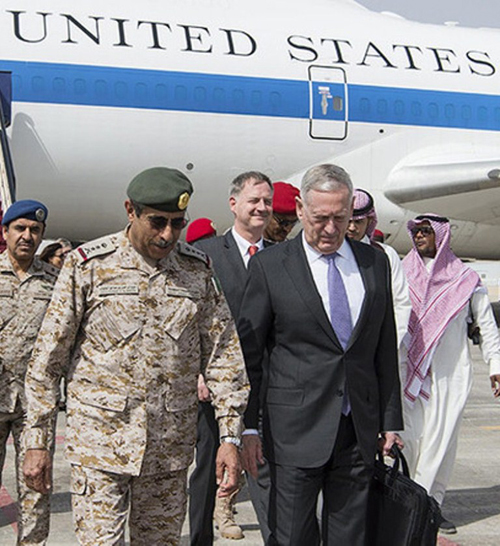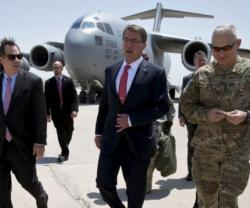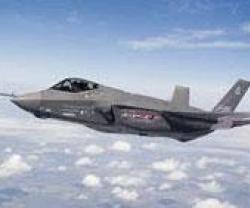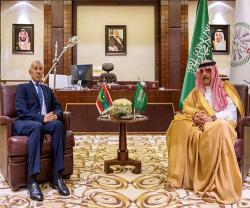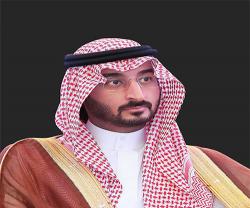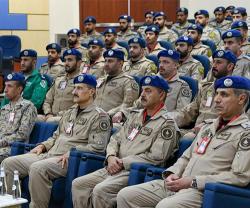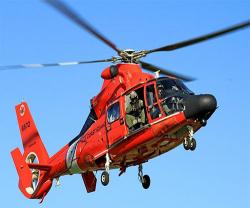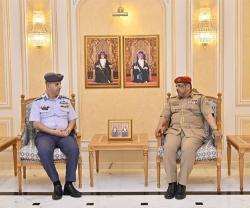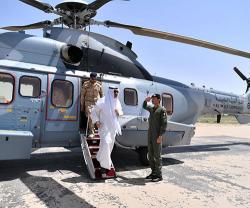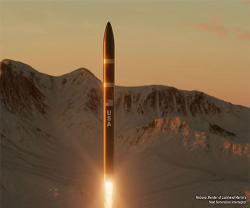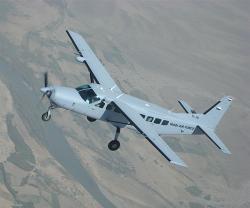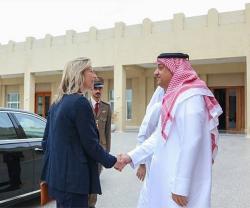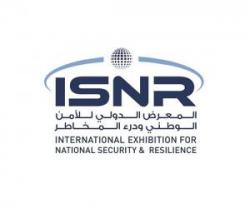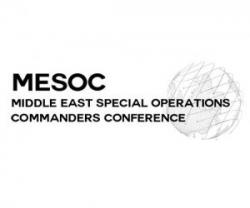US Defense Secretary Jim Mattis arrived in Saudi Arabia to reinvigorate the Riyadh-Washington alliance, with both countries seeing a common adversary in Iran and its “destabilizing” activities.
After Saudi Arabia, Mattis travels on Thursday to Egypt and then to Israel on Friday before returning to the Gulf Saturday for talks in Qatar
The US and Saudi Arabia have a decades-old relationship based on the exchange of American security for Saudi oil. But ties between Riyadh and Washington became increasingly frayed during the administration of President Barack Obama. Saudi leaders felt Obama was reluctant to get involved in the civil war in Syria and was tilting toward Riyadh’s regional rival Iran.
Riyadh “felt marginalized” during international negotiations on a nuclear accord with Iran, an American defense official said. That deal, signed in July 2015 by the Obama administration, saw the lifting of international sanctions in exchange for guarantees that Tehran will not pursue nuclear weapons.
The retired four-star Marine General met King Salman, Crown Prince Mohammad Bin Nayef, and Salman’s son Deputy Crown Prince Mohammad Bin Salman, who is also Defense Minister.
The Deputy Crown Prince last month met President Donald Trump in Washington.
Saudi leaders worry about Iran interfering in Arab countries by using Shiite communities to advance their pawns, as in Bahrain, Lebanon and Yemen.
Bordering Saudi Arabia, Yemen has been torn for more than two years by a war between Iran-backed Al Houthi rebels, their allies, and pro-government forces aided by a Saudi-led military coalition that receives some military support from the US.
The Saudis have found a more favorable ear in Washington under Trump, who denounces Iran’s “harmful influence” in the Middle East. Mattis has called Iran “the single biggest state sponsor of terrorism in the world”.
In February, Trump imposed new sanctions on Tehran after a ballistic missile test launch, and in response to its support for Yemen’s rebels.
The US military is watching Al Houthi activities along the strategic Bab Al Mandab strait connecting the Red Sea with the Indian Ocean.
Tensions with Iran were already high over another waterway, the Strait of Hormuz, which links the Gulf and the Indian Ocean.
Trump’s Yemen focus has so far been on a major escalation of attacks against militants from the Al Qaida in the Arabian Peninsula group in Yemen.
Pentagon officials have so far remained cautious on what they might do to support Saudi Arabia. The Trump administration could, for example, lift a freeze on the delivery of precision guided bombs to the Kingdom. Obama’s government blocked their transfer in December because of concerns over civilian casualties in Yemen.
Trump could also decide to reinforce support for the Arab coalition in Yemen, even if his administration wants the return “as quickly as possible” of UN-backed peace talks, as Mattis said at the start of his Saudi trip.
Washington would also like Riyadh to step up its participation in the campaign against the Islamic State group in Iraq and Syria. Options include the Kingdom intensifying its aerial operations or its humanitarian aid, the American defense official said, describing the fight against Daesh as “our number one concern”.
For the first time in six years of Syria’s war, the US military intervened directly against the regime of Bashar Al Assad by firing 59 cruise missiles at a Syrian government airbase. Saudi Arabia applauded this month’s strike after a suspected chemical bombing of a rebel-held town which the US blamed on Al Assad.

